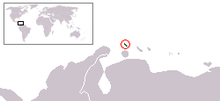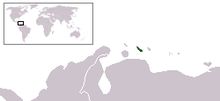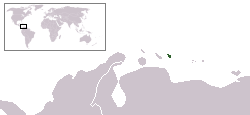List of transcontinental countries

This is a list of countries located on more than one continent, known as transcontinental states or intercontinental states. While there are many countries with non-contiguous overseas territories fitting this definition, only a limited number of countries have territory straddling an overland continental boundary, most commonly the line that separates Europe and Asia.
The boundary between Europe and Asia is purely conventional, and several conventions remained in use well into the 20th century. However, the now-prevalent convention, used for the purposes of this page, follows the Caucasus northern chain, the Ural River and the Ural Mountains. It has been in use by some cartographers since about 1850.[1] This convention results in several countries finding themselves almost entirely in "Asia", with a few small enclaves or districts technically in "Europe". Notwithstanding these anomalies, this list of transcontinental or intercontinental states respects the convention that Europe and Asia are full continents rather than subcontinents or component landmasses of the larger Eurasian continent.
Listed further below, separately, are countries with distant non-contiguous parts (overseas territories) on separate continents.
Contiguous boundary
Africa and Asia
The land border between Asia and Africa is considered to go along the Isthmus of Suez and the Suez Canal in Egypt. The border continues through the Gulf of Suez, Red Sea and Gulf of Aden.
Egypt
Two of 27 governorates of Egypt lie entirely on the Asian Sinai Peninsula and two are transcontinental: Ismailia Governorate is nearly equally divided by the Suez Canal, and Suez Governorate, which is coterminous with the transcontinental city of Suez, has a small portion east of the Canal.
Asia and Europe
Since there is no significant geographical separation between Europe and Asia north of the Black Sea, the border between the two is largely an arbitrary, historical, and cultural construct. An often cited definition of the Europe–Asia border is said to follow the Aegean Sea, the Turkish Straits, the Black Sea, along the watershed of the Greater Caucasus, the northwestern portion of the Caspian Sea and along the Ural River and Ural Mountains to the Arctic Ocean.[2][3] These delineations, however, are not definitive. For instance, the National Geographic places Cyprus entirely in Asia, and its geomorphology is similar to Asia; however the country is politically a member of the European Union, and it has an ethnic majority of Greek speaking Greek Cypriots and minority of Turkish speaking Turkish Cypriots. Similarly, although Georgia lies on the arbitrary Europe–Asia border, it is generally considered to be part of Europe.[4] A further complication arises from the fact that Siberia lies east of the Ural Mountains, but is not politically, geologically, or culturally distinct from European Russia.[5]
.svg.png)
The Turkish city Istanbul lies on both sides of the Bosporus (one of the Turkish Straits), making it a transcontinental city. Çanakkale is also a Turkish city situated on two continents. Russia, Azerbaijan and Turkey are transcontinental countries with territory in both Europe and Asia by any definition except that of Eurasia as a single continent. While Russia is historically a European country with a history of imperial conquests in Asia, the situation for Turkey is inverse, as that of an Asian country with imperial conquests in Europe. Kazakhstan is also a transcontinental country by this definition, its West Kazakhstan and Atyrau provinces extending on either side of the Ural River.[6] Despite its bi-continental placement, Kazakhstan's physical, cultural, and geographic characteristics are more similar to those of the other Central Asian countries.[7]
This Ural River delineation is the only segment not to follow a major mountain range or wide water body, both of which often truly separate populations. However, the Ural River is the most common division used by authorities,[2][6][8] is the most prominent natural feature in the region, and is the "most satisfactory of those (options) proposed"[9] which include the Emba River, a much smaller stream cutting further into Central Asian Kazakhstan. The Ural River bridge in Orenburg is even labeled with permanent monuments carved with the word "Europe" on one side, "Asia" on the other.[10]
Historical variations
The threefold division of the Old World into Europe, Asia and Africa has been in use since the 6th century BC, due to Greek geographers such as Anaximander and Hecataeus. The boundary between Europe and Asia is somewhat unique among continental boundaries because of its largely mountain-and-river-based characteristics north and east of the Black Sea. Europe can be considered more of a subcontinent within Eurasia in de facto terms, and it has sometimes been referred to as such.[11]
Anaximander placed the boundary between Asia and Europe along the Phasis River (the modern Rioni) in the Caucasus (from its mouth by Poti on the Black Sea coast, through the Surami Pass and along the Kura River to the Caspian Sea), a convention still followed by Herodotus in the 5th century BC.[12]
North and South America
- Further information: Borders of the continents § North and South America
The most common demarcation in atlases and other sources follows the Darién Mountains watershed divide along the Colombia-Panama border where the Isthmus of Panama meets the South American continent. This puts Panama entirely in North America and mainland Colombia entirely in South America.
Non-contiguous
Asia and Europe
- Greece: The territory of Greece includes a number of islands just off the coast of Asia Minor, such as Rhodes, Samos, Chios and Kastellorizo.
Europe and North America
- Greenland: Greenland is a country within the Kingdom of Denmark, fully located on the North American tectonic plate and close to the mainland, and is considered to be geographically part of North America. Although it is politically associated with Europe and internationally represented by a European country (including in the Council of Europe), it is autonomous. Historically and ethnically, its native population is of American tradition, although it also shares cultural links with other native peoples bordering the Arctic Sea in Northern Europe and Asia (today in Norway, Sweden, Finland and Russia), as well as in North America (Alaska in the U.S., Northwest Territories and Nunavut in Canada). Greenland was part of the Danish territory and within the territory of the European Union, but voted for a larger autonomy and is now excluded from it.
- Iceland: Iceland is on the fracture line splitting the Northern Atlantic Ocean between the North American plate and the Eurasian plate. Measuring to the North American island of Greenland, Iceland is much closer to North America than it is to Europe; however it is over twice as close to mainland Europe as to mainland North America. Using a plate tectonics definition, Iceland would qualify as a transcontinental country. However, "continents" are defined by conventions that predate any knowledge of plate tectonics, even though many of the plates are named for the continents that occupy them. Geographically, ethnically, historically, and culturally, Iceland is commonly considered to be European and not transcontinental. Iceland is a full member of the Council of Europe (but still not in the European Union, to which it could qualify).
- The Netherlands is mostly in Europe. However, since the dissolution of the Netherlands Antilles on 10 October 2010, the country includes the three "special municipalities" of Bonaire, St. Eustatius and Saba (collectively known as the BES islands) in the Caribbean area.
- Portugal: Continental Portugal is in Europe, while the Azores archipelago (also associated with Europe) has two islands (Corvo and Flores) that are part of the American plate. This might make Portugal a tricontinental country (with Madeira on the African plate) except for the fact that continents, as already noted, are not defined by tectonic plates.
Europe, North America, South America, Oceania, and Africa
- France: Metropolitan France is in Europe, while the five Overseas Departments and six Overseas Collectivities are in other continents. Guadeloupe, Martinique, Saint-Martin, Saint-Barthélemy, and Saint-Pierre and Miquelon are in North America, French Guiana is in South America, Mayotte and Réunion are in Africa, and New Caledonia, French Polynesia, and Wallis and Futuna are in Oceania. These Overseas Departments and Collectivities are integral parts of France, as are the uninhabited French Southern and Antarctic Lands and Clipperton Island.
Africa and Europe
- See Borders of the continents for more details about the geographical border between Africa and Europe.
- Italy: Although mainland Italy, Sardinia, Sicily, the Aegadian Islands, Ustica, and the Aeolian Islands are associated with Europe, the closest land to Pantelleria and the Pelagie Islands (Lampedusa, Linosa and Lampione) is Tunisia on the African mainland. Nevertheless, Pantelleria and Linosa are considered part of Europe, Lampedusa and Lampione part of Africa.
- Portugal: Continental Portugal is in Europe, while the archipelago of Madeira, an autonomous region of Portugal (including Porto Santo Island, the Desertas Islands and the Savage Islands), is associated with Africa. If we consider that the Azores autonomous region of Portugal has two islands (Flores and Corvo) that are part of North American tectonic plate (see Europe and North America section above), Portugal would be a transcontinental country except for the fact these plates are not defined as continents.
- Spain: Although its mainland is in Europe, Spain has territory including two provinces and two autonomous cities in Africa. Close to 5% of Spain's population live on the African continent. Territories include the Canary Islands in the Atlantic, the cities of Ceuta and Melilla on mainland North Africa and its Plazas de soberanía close to those cities) that are geographically part of Africa The Canary Islands, Ceuta and Melilla are three of the 19 autonomous communities and cities that form Spain, while the Plazas de Soberanía are under different military status. The African Mediterranean island of Isla de Alborán belongs to the transcontinental city of Almería and the transcontinental province of Almería.
Asia and Africa
- Yemen: Although mainland Yemen is in the southern Arabian Peninsula and thus part of Asia, and its Hanish Islands and Perim in the Red Sea are associated with Asia, Yemen controls the archipelago of Socotra, which lies east of the horn of Somalia and is much closer to Africa than to Asia. Socotra and the Hadramawt region constitute the transcontinental Hadramawt Governorate.
Asia and Oceania
- Australia: The Commonwealth of Australia consists of its namesake continent and island possessions associated with Oceania, Asia, and Antarctica. Its Indian Ocean island possessions of Christmas Island and the Cocos (Keeling) Islands are associated with Asia. The majority of Australia's Asian island residents have Asian ancestry and are Muslim or Buddhist.
- Japan: All of Japan consists of Asian islands except for the remote Bonin Islands, also known as the Ogasawara Islands, which are Pacific islands administered by Ogasawara, Tokyo.
- Papua New Guinea: Anthropologically Papua New Guinea is a part of Melanesia and is sometimes included in the Malay Archipelago. It is an observer in ASEAN and has contemplated full membership.[13]
- The Philippines, Malaysia, Indonesia, East Timor, Brunei and Singapore comprise the Malay Archipelago which lies on the border of Oceania and Asia. Depending on the interpretation of the border, the Philippines, Malaysia and Indonesia can be considered transcontinental countries and East Timor, Brunei and Singapore can be on either side.
North America, Oceania and Asia
- United States: While the territory of the United States lies overwhelmingly in North America, it includes the state of Hawaii in Oceania as well as other Oceanian island possessions and Alaskan islands on NE Asia's continental shelf.
North and South America
- Aruba, Bonaire, Curaçao and Trinidad and Tobago: The sea islands division of South America and North America is complicated. All Caribbean islands are often labeled as North American, but the Kingdom of the Netherlands countries of Aruba and Curaçao, and the Dutch special municipality of Bonaire lie on the continental shelf of South America, and can be considered South American as well. What complicates it even further is that the islands of Trinidad and Tobago lie on two continental shelves. The southern half of Trinidad lies in South America and the northern half of Trinidad, and Tobago, lie on the Caribbean plate. All these islands have closer cultural ties with North America.
- Colombia: Mainland Colombia is in northwestern South America and Malpelo Island in the Pacific Ocean is also associated with South America, but the nation also controls the San Andrés and Providencia archipelago, 640 kilometres (400 mi) WNW of Colombia's Caribbean coast, near the Caribbean coast of Nicaragua. This archipelago is coterminous with the department of the same name.
- Venezuela: Mainland Venezuela is in South America, but Isla Aves are geographically North American. Isla Aves is one of the federal dependencies of Venezuela under the administration of the Ministry of Popular Power for Interior, Justice and Peace.
North American Caribbean islands belonging to South American countries:
South American Caribbean islands:
Other examples
- Chile is mostly on the South American mainland and includes the Oceanian islands of Easter Island and Sala y Gómez Island. They and the outlying South American Juan Fernández Islands and Desventuradas Islands are part of the Valparaíso Region.
- The Danish Realm includes Denmark as well as the North American island of Greenland and the Faroe Islands associated with Europe. Greenland was integrated into the Danish Realm in 1953 and home rule was granted in 1979.
- The Kingdom of the Netherlands includes the constituent countries of Aruba, Curaçao, and Sint Maarten. In addition, after the split of the Netherlands Antilles the Caribbean islands of Bonaire, Sint Eustatius and Saba became special municipalities incorporated into the metropolitan Netherlands.
These examples have integral parts associated with other continents. Norway, South Africa, and the United Kingdom may also be considered transcontinental by virtue of their distant island possessions or territories associated with a continent other than where the country is based.
Antarctica: claims
A number of nations claim ownership over portions of the continent of Antarctica. Some, including Argentina and Chile, consider the Antarctic land they claim to be integral parts of their national territory. Some nations also have sub-Antarctic island possessions north of 60°S latitude and thus recognized by international law under the Antarctic Treaty System, which holds in abeyance land claims south of 60°S latitude.
See also
- Borders of the continents
- Dependent territory
- Historical powers
- List of countries by continent
- List of transcontinental empires and countries in history
- Thalassocracy
References
- ↑ The question was treated as a "controversy" in British geographical literature until at least the 1860s, with Douglas Freshfield advocating the Caucasus crest boundary as the "best possible", citing support from various "modern geographers" (Journey in the Caucasus, Proceedings of the Royal Geographical Society, Volumes 13-14, 1869). In 1958, the Soviet Geographical Society formally recommended that the boundary between Europe and Asia be drawn in textbooks from Baydaratskaya Bay, on the Kara Sea, along the eastern foot of the Ural Mountains, then the Ural River to the Mugodzhar Hills, the Emba River, and the Kuma–Manych Depression (i.e. passing well north of the Caucasus); "Do we live in Europe or in Asia?" (in Russian).; Orlenok V. (1998). "Physical Geography" (in Russian).. Nevertheless, most Soviet-era geographers continued to favour the boundary along the Caucasus crest. (E. M. Moores, R. W. Fairbridge, Encyclopedia of European and Asian regional geology, Springer, 1997, ISBN 978-0-412-74040-4, p. 34: "most Soviet geographers took the watershed of the Main Range of the Greater Caucasus as the boundary between Europe and Asia.")
- 1 2 National Geographic Atlas of the World (9th ed.). Washington, DC: National Geographic. 2011. ISBN 978-1-4262-0634-4. "Europe" (plate 59); "Asia" (plate 74): "A commonly accepted division between Asia and Europe ... is formed by the Ural Mountains, Ural River, Caspian Sea, Caucasus Mountains, and the Black Sea with its outlets, the Bosporus and Dardanelles."
- ↑ World Factbook. Washington, DC: Central Intelligence Agency.
- ↑ European Parliament, European Parliament Resolution 2014/2717(RSP), 17 July 2014: "...pursuant to Article 49 of the Treaty on European Union, Georgia, Moldova and Ukraine – like any other European state – have a European perspective and may apply to become members of the Union provided that they adhere to the principles of democracy..."
- ↑ "Ukrainians in Russia's Far East try to maintain community life". The Ukrainian Weekly. May 4, 2003.
- 1 2 World Factbook. Washington, D.C.: Central Intelligence Agency. Kazakhstan: Geography
- ↑ Encyclopedia Britannica, Kazakhstan, Retrieved: 8 May 2016
- ↑ Klement Tockner; Urs Uehlinger; Christopher T. Robinson (2009). "18". Rivers of Europe (Illustrated ed.). Academic Press. ISBN 9780123694492.
- ↑ Glanville Price (2000). Encyclopedia of the Languages of Europe. Oxford, UK: Blackwell. p. xii.
- ↑ "Orenburg bridge monument photos".
- ↑ Hans Slomp (2011). "Europe: A Political Profile". Retrieved 2014-09-10.
- ↑ Histories 4.38. C.f. James Rennell, The geographical system of Herodotus examined and explained, Volume 1, Rivington 1830, p. 244
- ↑ "Papua New Guinea asks RP support for Asean membership bid". GMA News. Retrieved 15 July 2014.
External links
- Transcontinental states according to World Gazetteer at Archive.is (archived 2012-12-18)




